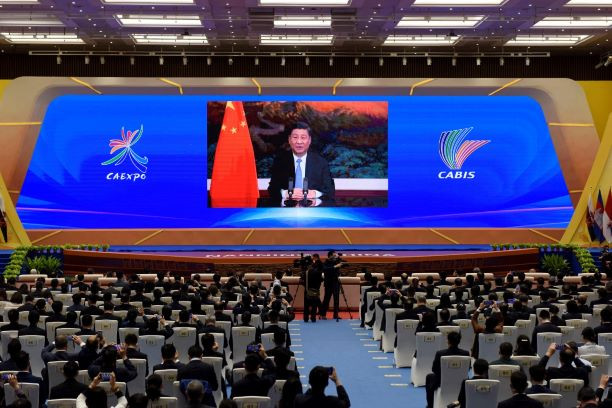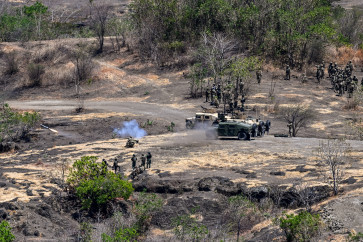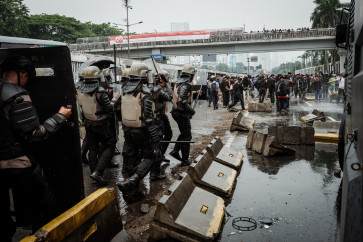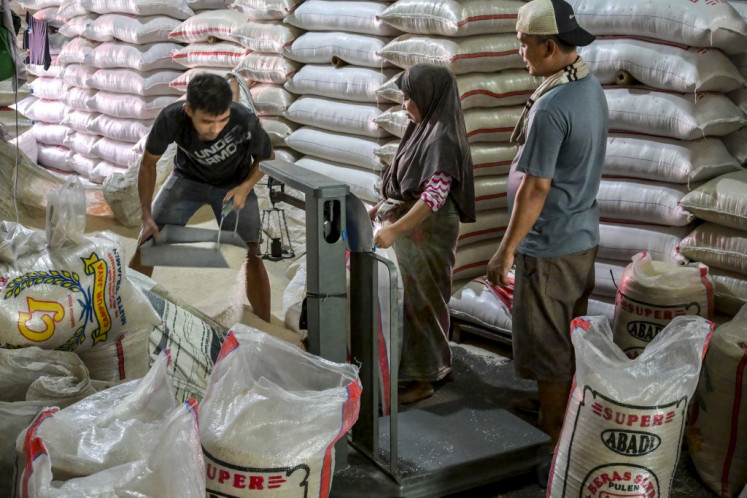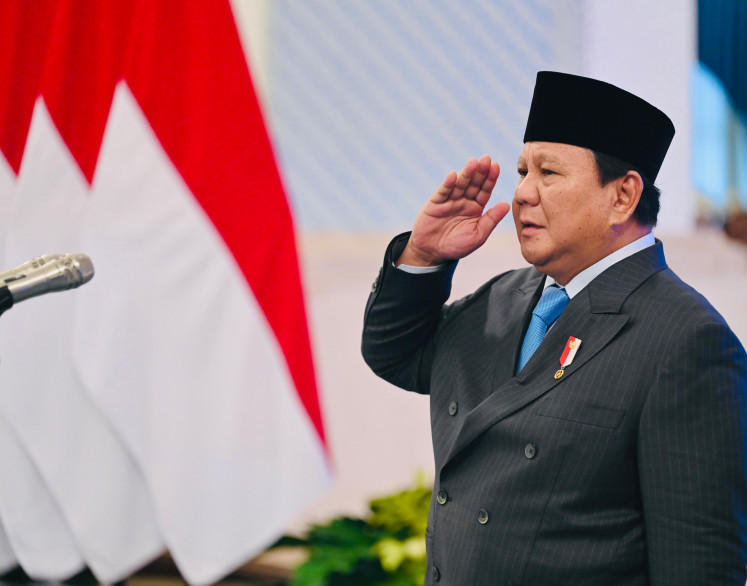Popular Reads
Top Results
Can't find what you're looking for?
View all search resultsPopular Reads
Top Results
Can't find what you're looking for?
View all search resultsFilling in the ASEAN-China comprehensive strategic partnership
The comprehensive strategic partnership will open a wider door for economic cooperation between ASEAN and China, either through bilateral or multilateral approach.
Change text size
Gift Premium Articles
to Anyone
"This is a new milestone in the history of our relations and will inject new impetus into the peace, stability, prosperity and development of our region and the world." – Chinese President Xi Jinping, Nov. 22, 2021.
On Nov. 22, 2021, an already-existing partnership bridge was strengthened as the ASEAN-China Comprehensive Strategic Partnership (CSP) was officially settled to be elevated in a special summit between China and ASEAN leaders, chaired by Chinese President Xi Jinping.
This new initiative came when the two sides were commemorating the 30th anniversary of their dialogue relations, featuring a shared future where cooperation in economy, regional affairs, trade and green development would be deepened.
A reference to China's broad understanding of CSP is reflected in a speech made by then-premier Wen Jiabao on the EU-China comprehensive strategic partnership in 2004 in which “comprehensive” refers to all-dimensional, wide-ranging and multilayered cooperation, “strategic” indicates the long-term and stable relations and “partnership” means equal-footed, mutually beneficial and win-win cooperation (Mission of the People's Republic of China to the European Union, 2004).
As part of Beijing's, so-called, “active neighborhood diplomacy,” this CSP followed China's faithful proposal to “upgrade” these relations, strengthening ties between ASEAN member countries and China.
As the pandemic is continuing to plague the world amid the geopolitical rivalry in the Indo-Pacific region, the connectivity between the two parties might come with challenges that serve as a testimony to the partnership.
On the economic front, COVID-19 has inflicted significant damage to the economies of Southeast Asia in which, as found by the Asian Development Bank, 9.3 million jobs were cut and 4.7 million people were pushed into extreme poverty. The reduction of 0.8 percentage points of the region's gross domestic product (GDP) is projected by the ongoing Omicron wave, while the output would be depressed to more than 10 percent below the 2020 no-COVID baseline scenario, according to Pitakdumrongkit, 2022.
Moreover, despite the fact that neither Russia nor Ukraine are major trading and investment partners for ASEAN, the ongoing war in Ukraine has affected the global supply chain in terms of food and energy, posting economic and financial impacts on many countries, including countries in Southeast Asia.
On the sociocultural front, the pandemic has prevented the active engagement between peoples of ASEAN countries and China since early 2020. Moreover, on the political security front, the political instability in Myanmar and the increasing tensions over the Taiwan Strait have downplayed the political inclusiveness and intensified the division in the region, adding to already-existing disputes in the South and East China Seas, as well as the Korean Peninsula.
Not all challenges are a setback. Instead, challenges may often come with opportunities.
On the economic front, since 2020, for the first time, ASEAN and China have become each other's largest trading partners, in which US$516.9 billion of total merchandise trade was concluded (ASEAN, 2021). This CSP initiative will open a wider door for economic cooperation between the two sides, either through the bilateral or multilateral approach.
With this new bond of partnership, another $1.5 billion of development assistance was intended to be offered by China to ASEAN countries in the mission of fighting COVID-19 and boosting economic recovery in addition to another $150 billion worth of agricultural products that China has also promised to buy from ASEAN over the next five years (Xinhua, 2022).
On the sociocultural front, the COVID-19 pandemic reaffirms the two parties' partnership commitment as China was the first country to deliver vaccines to hard-hit countries in Southeast Asia. At least 7 million doses across nine Southeast Asian countries were donated by China by the time the US started to deliver its first donation in July 2021 (Fraser & Richard, 2022). This commitment has made China the number one friend of Southeast Asian countries in the most desperate time, solidifying the relationship between the people of ASEAN and the people of China.
Besides, China’s soft power has warmed the Southeast Asian region for centuries. Upon centuries of cultural influences, 40 Confucius Institutes have been established throughout the region. Indonesia alone hosts eight Confucius Institutes (Vannarith, 2021). Beyond that, 77 sister-city pairs between China and Southeast Asian countries have been established, along with mutual city-to-city cooperation (Maude and Fraser, 2022).
On the political security front, the CSP will strengthen cooperation on nontraditional security threats in the region (ASEAN, 2022). Moreover, China’s policy of noninterference in the region’s internal affairs, especially the domestic issues of Southeast Asian countries, has allowed ASEAN to solve its problems through its own mechanisms, building a solid ground of faithful partnership between the two parties (Embassy of the People’s Republic of China in the Commonwealth of Australia, 2021).
China’s advanced digital economy maintained a high average growth rate of 15.9 percent between 2012 and 2021, contributing 39.8 percent to the country’s GDP (Xinhua, 2022). In Southeast Asia, the value of the digital economy is projected to reach $1 trillion in 2030 (Loh, 2021). Therefore, on the economic front, with the existing frameworks, including the 2020 China-ASEAN Year of Digital Economy Cooperation and the Initiative on Building Partnership on Digital Economy (ASEAN-China Center, 2020), stronger cooperation between China and ASEAN in digital industries is imperative now that the world is shifting to the digital era.
On the sociocultural front, as youth diplomacy plays a significant role in establishing inclusive regionalism, youth-to-youth exchange programs shall be increased, especially for professional development purposes for young people in developing Southeast Asian countries.
On the political and security front, the noninterference policy between the two parties shall be maintained as the countries in the region obtain a rightfulness in resolving their internal disputes without external interventions, except for humanitarian and financial assistance.
President Xi's “Asia for Asians” vow is a concise, yet powerful message in which the future of Asia should be left to the Asian people to decide. Today is the Asian century, and ASEAN centrality has become more significantly important now than ever.
***
The writer is a research master’s candidate majoring in International Development Studies at the Graduate School of International Cooperation Studies of Takushoku University, Tokyo, under the MEXT Program.

